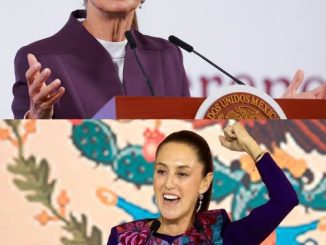The United States Faces Education Crisis Amid Record Low Reading Scores; Trump’s School Choice Initiative Sparks Heated Debate
In a striking revelation of the ongoing education crisis, the latest National Assessment of Educational Progress (NAEP)—commonly known as the Nation’s Report Card—has unveiled alarming statistics.
Released earlier this week, the data demonstrates historically low reading comprehension scores among U.S. students, prompting significant concern from educators, parents, and political leaders nationwide.
According to the report, approximately 70% of eighth graders in the United States scored below proficient levels in reading, while nearly 40% of fourth graders failed to reach basic literacy standards.
These figures represent a substantial decline in academic performance, underscoring systemic issues within the nation’s education framework.

In response, former President Donald Trump announced sweeping educational reforms intended to address these troubling trends.
The announcement, timed strategically with National School Choice Week, includes controversial executive actions aimed at reshaping American education through expanded school choice and decreased federal oversight.
Trump’s executive orders target two key areas: eliminating federal funding for educational programs deemed as “indoctrination,” including critical race theory and radical gender ideology, and expanding school choice options to give parents greater control over their children’s education.
“The nation’s report card shows that fourth graders are not reading at the level they should,” stated a spokesperson from Trump’s team, emphasizing the administration’s commitment to traditional educational values. “President Trump is not failing America’s children—he is saving America’s children.”
The Trump administration argues that the Department of Education, established in 1979 under President Jimmy Carter, has absorbed more than three trillion taxpayer dollars without delivering meaningful educational improvements. Trump supporters highlight declining literacy rates and math proficiency scores as proof that federal oversight has failed.

Linda McMahon, appointed as Secretary of Education, is tasked with significantly reducing the size of the federal education bureaucracy. Although complete dissolution of the Department of Education requires congressional approval, McMahon’s directive includes scaling back departmental functions dramatically, focusing primarily on the administration of Pell Grants and federal student loans.
However, Trump’s reforms have ignited substantial criticism from educational leaders and Democratic officials. Critics argue that dismantling federal oversight threatens vital civil rights protections and equitable access to education for disadvantaged and disabled students. They fear that a voucher-driven, privatized education system could widen existing educational disparities.
Randi Weingarten, president of the American Federation of Teachers, vocalized sharp opposition. “Curriculums are set at the state level. When we see educational failures in states like Arkansas, Mississippi, and West Virginia, the blame lies with state governance, not federal oversight,” Weingarten noted in recent public statements.
She emphasized the importance of federal roles in funding and civil rights enforcement, describing Trump’s initiative as an attempt to privatize and potentially sectarianize public education.

“Republicans have long sought to dismantle the public education system,” Weingarten continued. “They want to shift public funds into privatized institutions, often religious in nature. This directly undermines the foundational principles of public education in America.”
Educational policy experts concur that privatization and voucher systems often disproportionately benefit wealthier families, exacerbating existing inequalities.
Underfunded public schools, left to educate predominantly lower-income and minority populations, frequently suffer resource shortages and inadequate support.
Critics further emphasize that the Trump administration’s claims about “indoctrination” in schools are overstated, arguing that education should prepare students for diverse workplaces and civic responsibilities in a globalized society.
Amid the political controversy, a broader consensus emerges: the current educational trajectory in America is unsustainable. The literacy crisis has stark implications not just for individual academic achievement but for economic competitiveness and democratic participation.
More than half of American adults currently read at or below a sixth-grade level, an unsettling statistic that highlights the urgency of reform. Experts warn that continued declines in literacy and numeracy rates risk leaving the United States ill-prepared for economic and social challenges in an increasingly competitive global market.

While Trump’s approach of returning educational responsibility to states resonates with proponents of limited government, it raises questions about consistency in educational quality across different regions.
Opponents argue that state-run systems risk exacerbating educational inequalities, given that states with historically lower educational outcomes might lack sufficient resources or political will to make necessary improvements.
The ideological divide over educational policy mirrors broader partisan conflicts in American politics, with Republicans generally favoring decentralized control and Democrats supporting stronger federal oversight to ensure equity and access.
As the debate unfolds, parents across the country express deep concern about the quality of education their children receive. One parent, reacting to the new report card figures, remarked, “We need schools that focus on reading, writing, and math, not political ideologies or cultural controversies. Our kids deserve an education system that actually educates them.”
In contrast, critics of Trump’s reforms remain wary of reducing federal involvement too drastically. They assert that federal oversight has historically played a critical role in advancing educational equity, particularly regarding rights for students with disabilities and the implementation of anti-discrimination measures.

“When Republicans discuss education reform, they rarely talk about disabled students or equal access,” noted one Democratic analyst. “Instead, their focus is overwhelmingly on privatization and ideological battles. Public education is a cornerstone of democracy, intended to provide equal opportunities regardless of background or income.”
As policymakers and educators confront the stark realities presented by the nation’s report card, the stakes for students—and for the future prosperity of the United States—remain high. Trump’s controversial education policies represent only one perspective within a much broader debate on how best to improve American education.
With the 2024 election cycle on the horizon, education is likely to emerge as a central campaign issue, influencing voter sentiment nationwide. The urgent need to reverse declining academic performance transcends partisan politics, compelling leaders to find pragmatic solutions that serve all students effectively.
Ultimately, the United States faces a critical juncture: whether to continue investing in traditional public education systems, embracing reforms with strong federal oversight, or to shift toward decentralized models prioritizing parental choice and privatization. The outcome of this debate will profoundly shape America’s educational landscape—and the future of millions of students—for decades to come.


